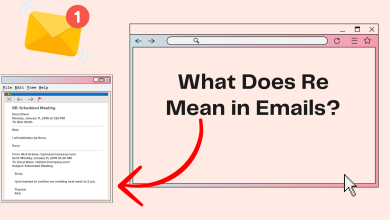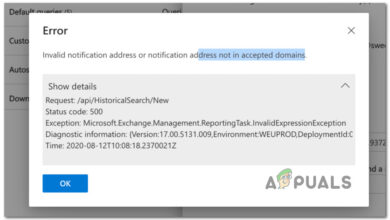How to Fix ‘Your Mailbox Has Been Temporarily Moved’ Error?
Some Office 365 users are reporting that they always see the ‘Your mailbox has been temporarily moved on Microsoft Exchange server‘ error whenever they try to use Microsoft Outlook to manage their email addresses. Affected users are reporting that the error message returns the next time they attempt to start Microsoft Outlook regardless of what they choose at the prompt (Use Temporary Mailbox or Use Old Data).
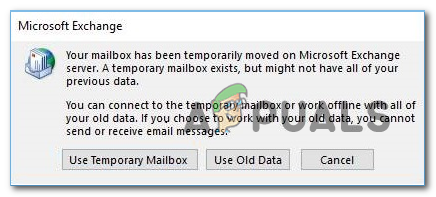
If you’re encountering this issue, the first thing you should do is remove any complementary Outlook profile that is stored alongside your active one in order to avoid any conflicts. If that doesn’t work, you should proceed by removing every Outlook profile that’s stored locally and create a new one from scratch that uses the same email account.
If you’re using an MS Exchange account, you should be able to fix the error prompt by accessing your email settings and enabling the Use Cached Exchange Mode option from Offline Settings. Renaming the current Outlook profile in order to force the program to create a new instance can also fix the issue if the problem occurs due to some corrupted temporary files.
In case you’re encountering the issue with Outlook 2010, you might see this error due to the fact that the KB2878264 update is not installed on your computer (Method 3 will show you how to install it manually).
However, if you’re seeing the ‘Your mailbox has been temporarily moved on Microsoft Exchange server‘ error with Outlook 2013 on Windows 10, you might need to do some registry tweaks in order to accommodate Mod auth.
Method 1: Remove any other Outlook profile
As it turns out, one of the most common causes that will trigger the ‘Your mailbox has been temporarily moved on Microsoft Exchange server‘ error is a conflict with one of the other Outlook profiles that are being stored locally.
Some affected users have managed to resolve the issue by removing every Outlook profile except for the user’s primary profile. But before you go through with this, keep in mind that when you remove a profile in Outlook, every bit of data for that associated account will also be removed.
To ensure that you’re not losing any important data, make sure to back up any information that you need (unless the data is also stored on the server or you are sure that you have no use for the data).
Note: If you want to backup your data, go to File (ribbon-bar at the top) > Open & Export > Import / Export > Export to a file, choose Outlook Data File (.pst) and hit Next to complete the operation.
After you’ve made sure that you backed up you. PST file or you are certain that you don’t need it, follow the instructions below to remove any other Outlook profile that’s not the primary one:
- Close Outlook and any associated instances.
- Press Windows key + R to open up a Run dialog box. Next, type ‘control’ inside the text box and press Enter to open up the classic Control Panel interface.

Accessing the Classic Control Panel interface - Inside the classic Control Panel interface, use the search function in the top-right corner of the screen to search for ‘mail‘.
- Next, from the list of results, double-click on Mail (Microsoft Outlook) from the list of results.
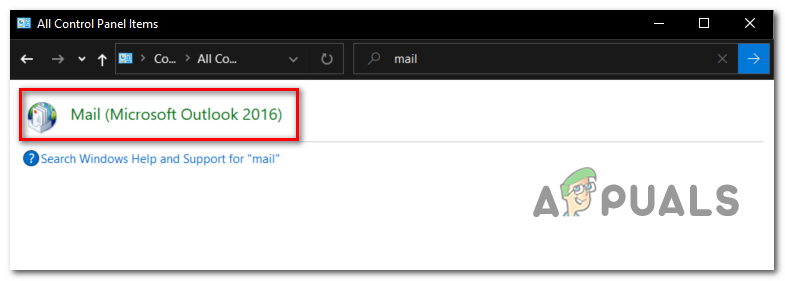
- Inside the Mail Setup window, click on the Show Profiles… button under Profiles.
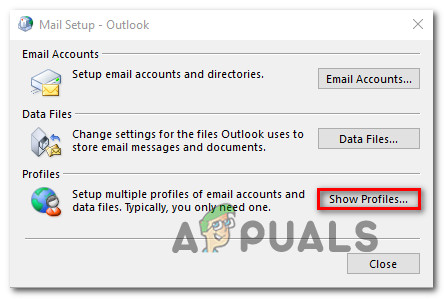
Accessing the Profiles menu - Once you’re inside the Mail window, select a profile that is not your primary one and click the Remove button associated with it. Do this with every profile that you’re not actively using.
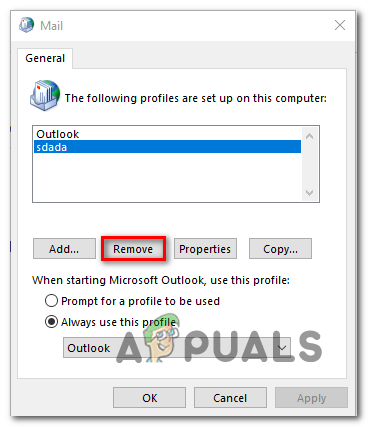
Removing any additional Outlook email profile Note: If you’re not sure which profile is your primary one, select each profile and click On Properties > Email accounts and see which one is using the email address that you’re encountering issues with.
- Click Yes at the confirmation prompt to confirm the removal of the additional Outlook profiles.
- Once every Outlook profile has been removed (except the primary profile), click Ok in the Mail dialog box to close the window.
- Launch Outlook again and see if the issue has been resolved.
In case you’re still encountering the ‘Your mailbox has been temporarily moved on Microsoft Exchange server‘ error, move down to the next potential fix below.
Method 2: Create a new Outlook profile
In case the first method wasn’t effective, it’s possible that you’re dealing with a partially corrupted Outlook profile that is locally stored. Several affected users finding themselves in a similar situation have reported that they managed to resolve the issue by creating a brand new profile using the same email account and removing the original Outlook Profile.
Here’s a step-by-step guide that will allow you to do this:
- Close Outlook and any associated instances.
- Press Windows key + R to open up a Run dialog box. Next, type ‘control mlcfg32.cpl‘ inside the text box and press Enter to open up the Mail box directly.
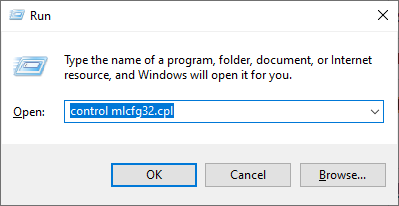
Opening the Mail dialog box Note: If you’re on Windows 10, this command will not work. In this case, type ‘control’ and click on the Mail entry from the classic control panel interface.
- Once you’re inside the Mail window, click on the Show Profiles button associated with Profiles.
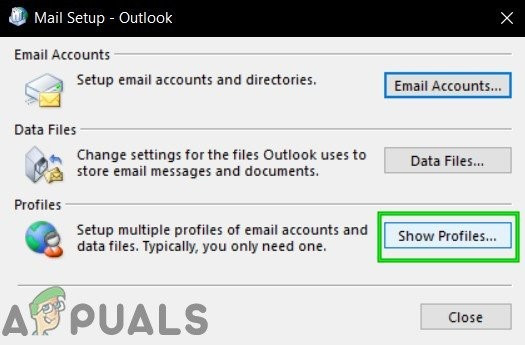
Show Profiles in Mail Setup - Inside the Mail box, start by selecting each email profile individually and hit the Remove button. Do this until the list of connected email profiles is completely empty.

Removing any Outlook email profiles - Once every profile has been removed, click on Add. Next, specify a name for the new profile and click Ok to create it.

- Follow the steps inside the Add Account wizard to add the user’s email account. Once you fill every required information, click on Finish to complete the process.
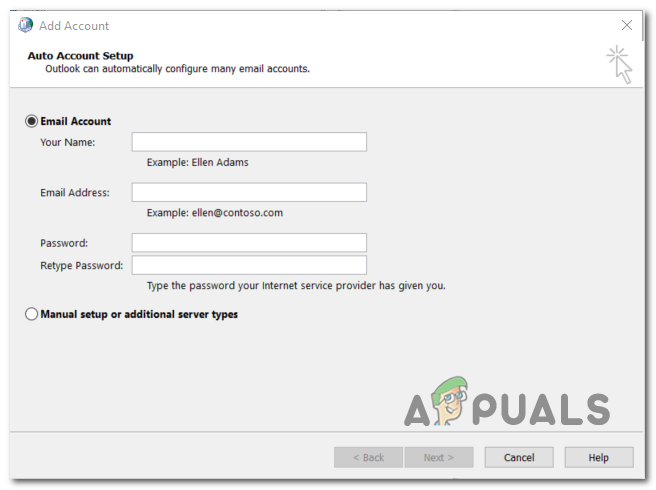
Adding the primary account again - Once the new account has been created, return to the main Mail dialog box, select the Always use this profile toggle and set it to Outlook using the drop-down menu. Finally, click Apply to save the changes.
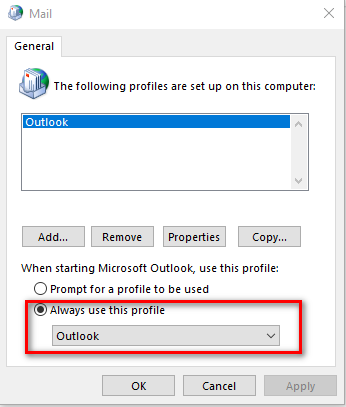
Connecting the newly created profile with Outlook - Start Outlook again and see if the issue is now resolved.
In case you’re still seeing the ‘Your mailbox has been temporarily moved on Microsoft Exchange server‘ error when you attempt to launch Outlook with the newly created profile, move down to the next fix below.
Method 3: Installing the KB2878264 Outlook update
As some affected users have reported, this issue can also be caused in scenarios where the Outlook update KB2878264 is not installed on the Outlook machine. This is only applicable for users that are encountering the ‘Your mailbox has been temporarily moved on Microsoft Exchange server‘ error with Outlook 2010.
It turns out that Microsoft already released a hotfix for this issue (KB2878264, pushed through Windows Update).
The WU component should have automatically installed it on your machine in case if you haven’t taken any steps to prevent the installations of new updates for your operating system.
However, you can also install the update manually through the official channels. here’s a quick step-by-step guide that will show you how to install the KB2878264 Outlook update for Outlook 2010:
- Open your File Explorer, right-click on My Computer (This PC) and click on Properties from the newly appeared context menu.
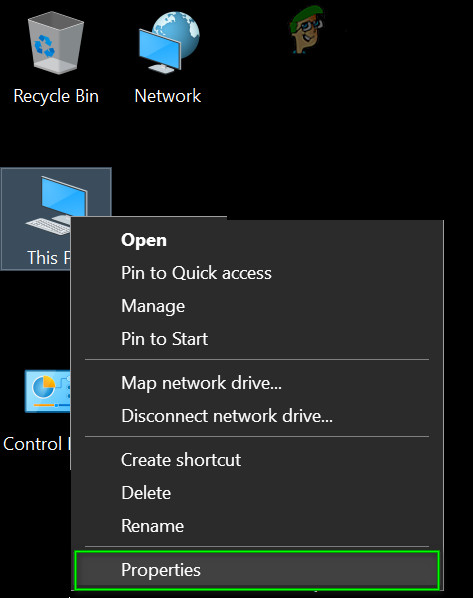
Open PC Properties Note: If you already know your system architecture, skip step 1 and step 2.
- Inside the System Properties screen, take a look at the System type (under System). If it shows a 64-bit Operating system, you need to install the 64-bit update. Else, you need to install the 32-bit version.
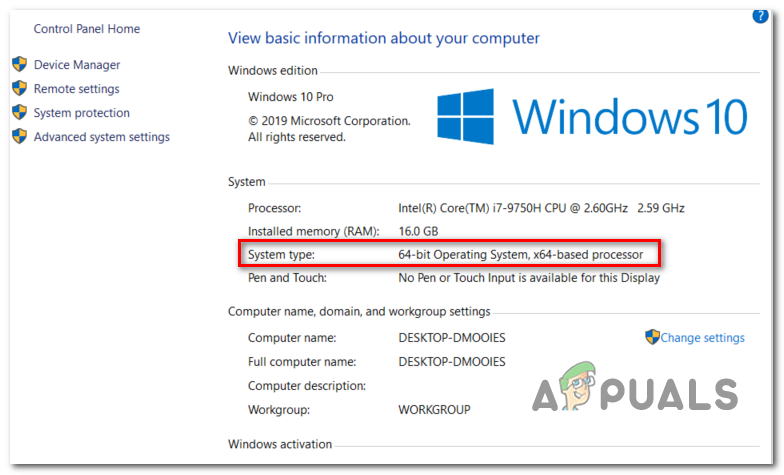
Checking on your OS architecture - Once you know your OS architecture, visit this link (here) and download the version of the KB2878264 that’s compatible with your Windows version.

Downloading the Outlook update compatible - Once the download is complete, open the installation executable and follow the on-screen prompts to install it on your system.
- After the update is installed, restart your computer and see if the issue is resolved at the next computer startup.
In case the same issue is still occurring, move down to the next potential fix below.
Method 4: Enable Cached Exchange Mode
If you were already connected with an Exchange account, you might be able to fix the issue by going to your email User Account configuration window and enabling the ‘Use cached Exchange Mode‘ option. This operation has proven to be successful for a lot of users that we’re struggling to fix the ‘Your mailbox has been temporarily moved on Microsoft Exchange server‘ error.
Here’s a quick guide that will allow you to enable the ‘Cached Exchange Mode’ option on the email account that you’re actively using for Outlook:
- Close Outlook along with any associated instances.
- Press Windows key + R to open up a Run dialog box. Next, type ‘control.exe’ and press Enter to open up the classic Control Panel interface.
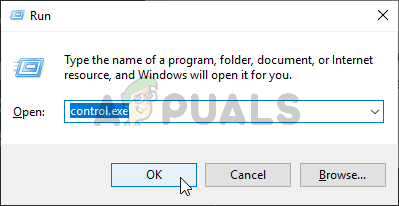
Opening the Control Panel - Inside the Control Panel window, click on Mail from the list of options or use the search function to search for it first.
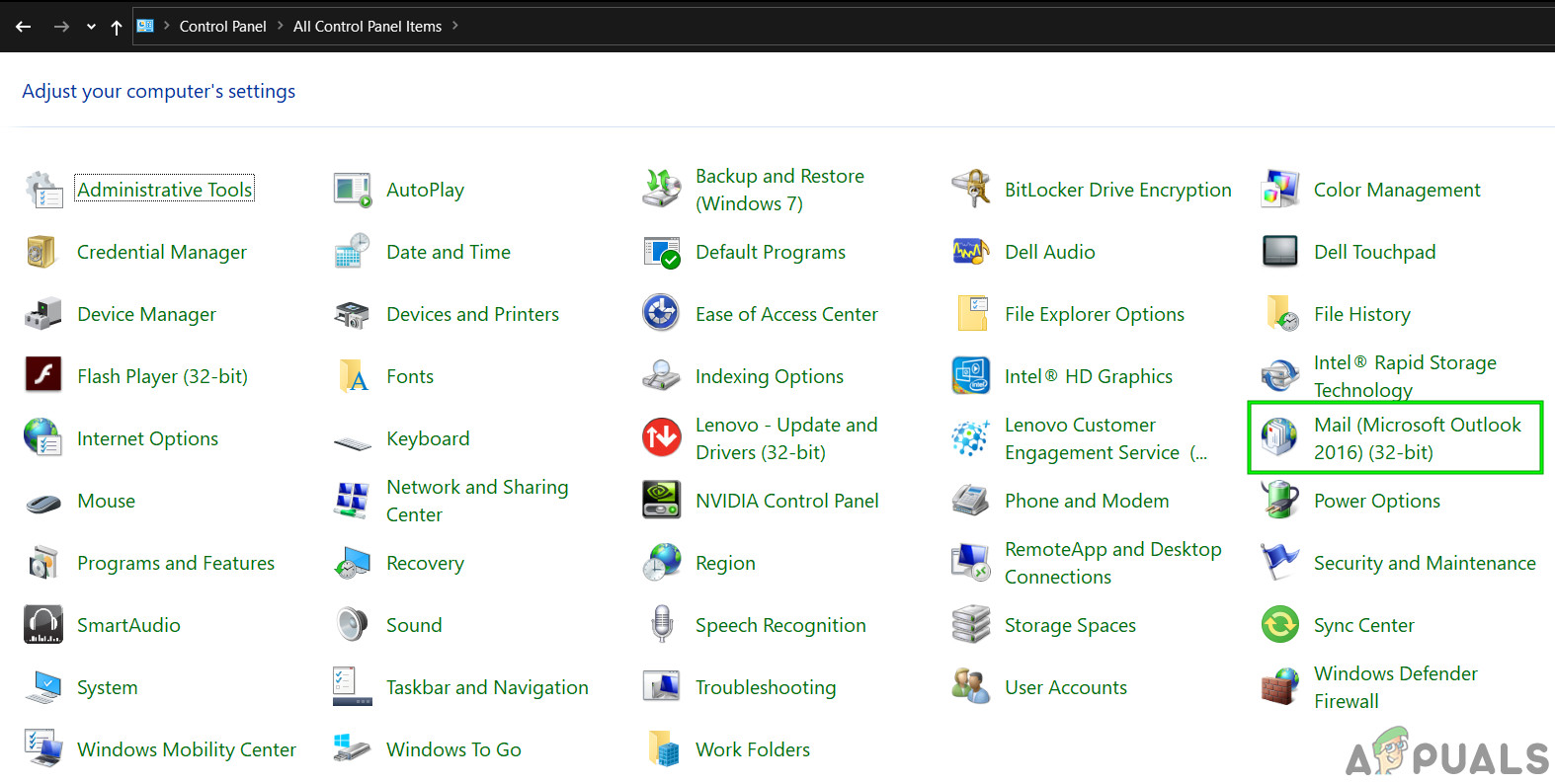
Open Mail in Control Panel - Inside the Mail Setup screen, click on the E-mail account button associated with E-mail Accounts.
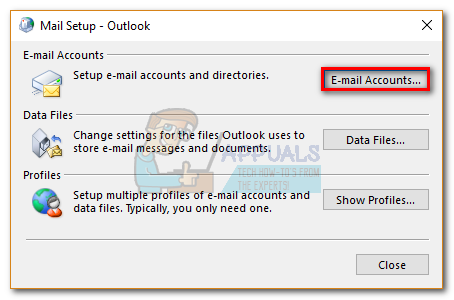
Accessing the Email accounts menu - From the Accounts Settings menu, select the E-mail tab first, then click on the entry associated with the account that you’re currently using. Next, double-click on the email account that you’re actively using.
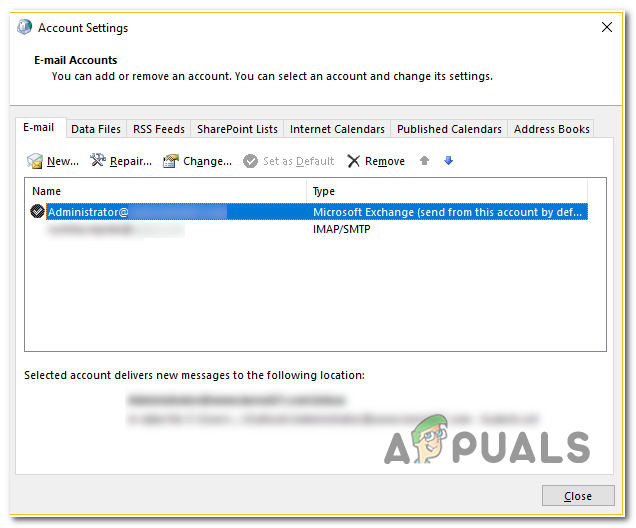
Accessing the email account that is currently active - Inside the settings menu, go to the Offline Settings section and check the box associated with Use Cached Exchange Mode.
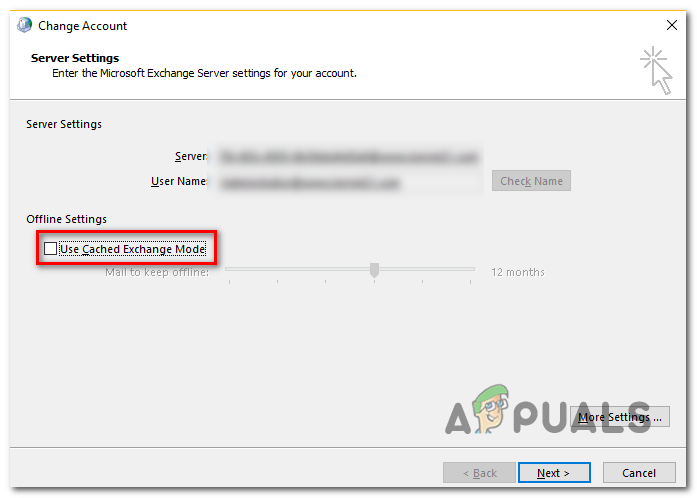
Enabling Cached Exchange Mode Note: If the option is already enabled, disable it, save the change, enable it again and restart Outlook.
- Restart Outlook and see if the issue is resolved at the application startup.
Method 5: Renaming the Outlook folder
As it turns out, the ‘Your mailbox has been temporarily moved on Microsoft Exchange server‘ error can also occur due to some corrupted data present in the main AppData folder of the Outlook application.
Some users facing the same issue have managed to get the problem fixed by accessing the AppData folder and renaming the existing Outlook folder in order to force the application to create a fresh folder. This operation will also ensure that you don’t have to deal with any data loss in case the operation is not successful.
Here’s a quick guide that will show you how to rename the existing Outlook folder:
- Press Windows key + R to open up a Run dialog box. Next, type ‘%appdata%’ and press Enter to open up the AppData folder on your computer.
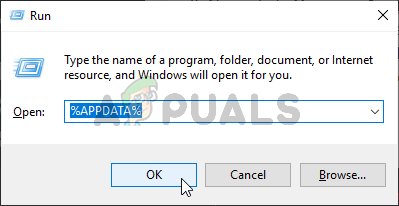
Opening AppData in the Run dialog box Note: Keep in mind that this folder is hidden by default.
- Once you’re inside the AppData folder, look for the entry associated with Outlook. When you see it, right-click on it and choose Rename.
- Next, rename the exiting Outlook folder with the ‘.old‘ extension in order to force the application to create a new folder.
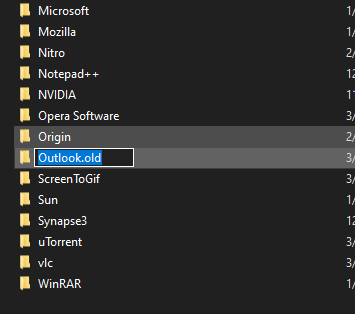
- Restart your machine and launch Outlook at the next startup to see if the issue has been resolved.
In case you’re still having the same problem, follow the method below if it’s applicable to your particular scenario.
Method 6: Tweak Registry settings for ModAuth (Outlook 2013 ONLY)
If you’re having the ‘Your mailbox has been temporarily moved on Microsoft Exchange server‘ error with Outlook 2013, chances are you might be able to fix the issue by doing some registry tweaks in order to accommodate ModAuth.
If this scenario is applicable and you are using Outlook 2013, follow the instructions below to modify the EnableADAL and Version values in order to fix the issue:
- Press Windows key + R to open up a Run dialog box. Next, type ‘regedit’ inside the text box and press Enter to open up the Registry Editor.
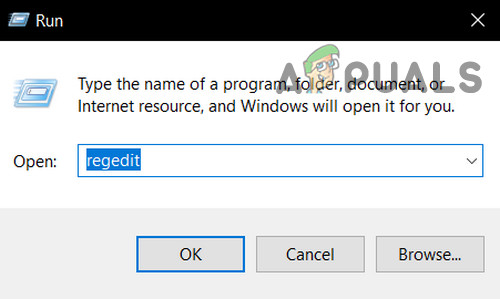
Open Regedit Note: When prompted by the UAC (User Account Control), click Yes to grant admin access.
- Once you’re inside Registry Editor, use the menu on the left to navigate to the following location:
HKCU\SOFTWARE\Microsoft\Office\15.0\Common\Identity\
Note: You can get to this location instantly by pasting the location directly into the navigation bar and pressing Enter.
- Once you’re inside the Identity key, move over to the right-hand pane, double-click on EnableADAL and set the value to 1 and the Base to Hexadecimal.
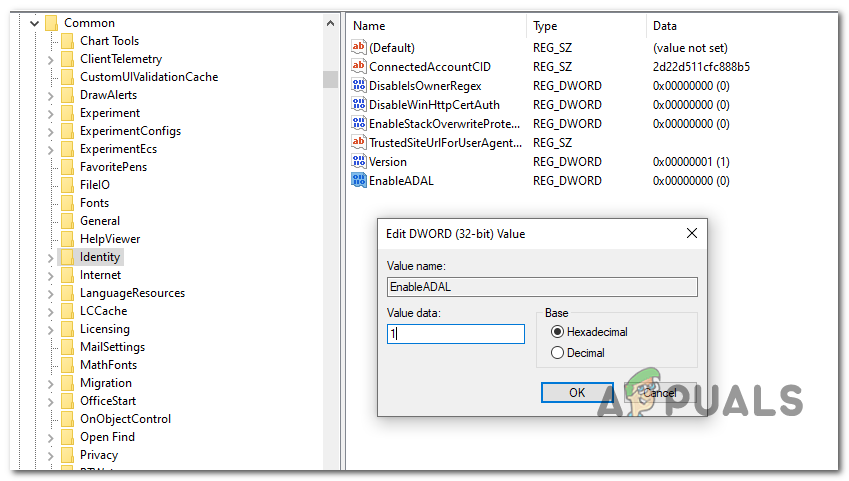
Enabling the EnableADAL registry Note: In case the value REG_DWORD is not created, create yourself by right-clicking on an empty space > New > Dword (32-bit) value.
- Next, double-click on the Version value and set the Base to Hexadecimal and the Value data to 1.
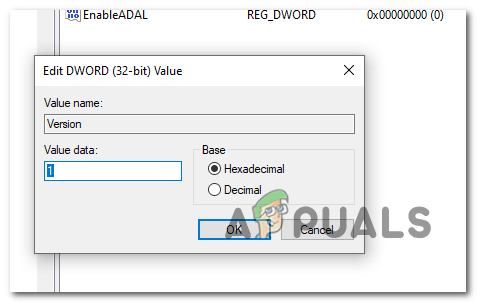
Modifying the value of Version registry - Close the Registry Editor and restart your computer to implement the changes.
- Once the next startup, open up Outlook and see if you’re still encountering the ‘Your mailbox has been temporarily moved on Microsoft Exchange server‘ error.
